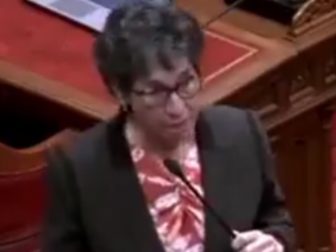Study: On Welfare, Some Families Can Get Equivalent of Up to $147,198 Per Year
A new study posits that doing nothing pays big time in Joe Biden’s America.
The study by the Committee to Unleash Prosperity found that supplemental unemployment benefits that continue to flow in many states are the frosting on a towering cake of benefits that could bring non-working families’ incomes to an annualized level of nearly $150,000 a year.
The study noted that although 25 states — mostly led by Republicans — are shutting off the spigot of extra unemployment, the other 25 states and the District of Columbia are letting the money keep flowing through September, when the federal authorization for the extra payments ends.
The study noted that the incentive to avoid working comes at the same time millions of job openings are going unfilled.
“The 9.3 million unfilled jobs is almost 2 million beyond the pre-pandemic record for the U.S., and the policy riddle is why more unemployed workers are not getting back in jobs,” the study’s authors, Casey Mulligan, Stephen Moore and E. J. Antoni, wrote.
The answer lies in Washington, D.C.
The study found that due to the $300 a week supplemental unemployment payment that was part of the American Rescue Plan, “[i]n 21 states and DC, households can receive wage equivalent of $25 an hour in benefits with no one working. “
It gets worse.
“In 19 states, benefits are equivalent to $100,000 a year in salary for a family of four with two unemployed parents,” the report said.
[firefly_poll]
In Massachusetts, for example, a family with two unemployed parents and two children can rake in $37 an hour, which would come to $147,198 as an annual salary. As noted in the study, that annualized income is $78,495 higher than the average household income.
Washington, New Jersey, Minnesota, Connecticut, Oregon, Hawaii, Pennsylvania, Illinois, Rhode Island, Colorado, Kentucky, Maine, Vermont, Kansas, California, New York, New Mexico, Nevada, the District of Columbia, Delaware, Virginia, Wisconsin, Michigan, North Carolina and Louisiana all have benefits freight trains that collectively pay out cash at the rate of upwards of $100,000 a year, the study reported.
“What is clear from this analysis is that even in the states with the lowest valued package of benefits, (that are still paying $300 supplemental UI payments) the welfare equivalent of having a job that pays a wage or salary is far higher than $36,000 a year,” the study reported.
“The median household income in the United States in 2019 was $68,500. There are now 17 states giving benefits — the average unemployment benefits combined with other cash and noncash payments — which exceed the national median income. Every state’s maximum benefit package exceeds the median household income in the United States by at least 20 percent and in two states by 100 percent,” the researchers found.
The study noted that while there may have been good intentions at the start of the pandemic, when the first supplemental unemployment payments were approved, predictions from congressional Democrats that these would be needed through the fall “have been wildly inaccurate, and Congress misjudged the rapid recovery as a result of the COVID vaccine.”
“The labor problem today is too few workers, not too few jobs.”
The researchers stated that the expanded unemployment benefits alone should not shoulder all the blame, because other benefits doled out by Washington — from direct cash payments to child care tax credits to rental assistance — “have made working financially unattractive for millions of Americans who could be working but are not employed.”
“When looked at in isolation, UI benefits which Americans are receiving this year may not be severe disincentives to work. But this year Americans are getting significant benefits whether they are working or not,” the study reported.
The study said it was “nearly beyond dispute that supplemental unemployment benefits are reducing employment and that explains the record 9.3 million job openings across the nation.”
America’s worker shortage “will surely persist through the summer months if the 25 states that have not canceled supplemental benefits, continue with high benefits through September. We estimate that if Congress or the remaining states were to suspend the weekly benefit supplement, several million more workers would gain employment over the summer months.”
The authors concluded that states that continue the higher unemployment payments are only hurting themselves.
“The continuation of benefits at the current level will lead to higher unemployment in the mostly blue states that today already have among the highest unemployment rates.”
This article appeared originally on The Western Journal.











